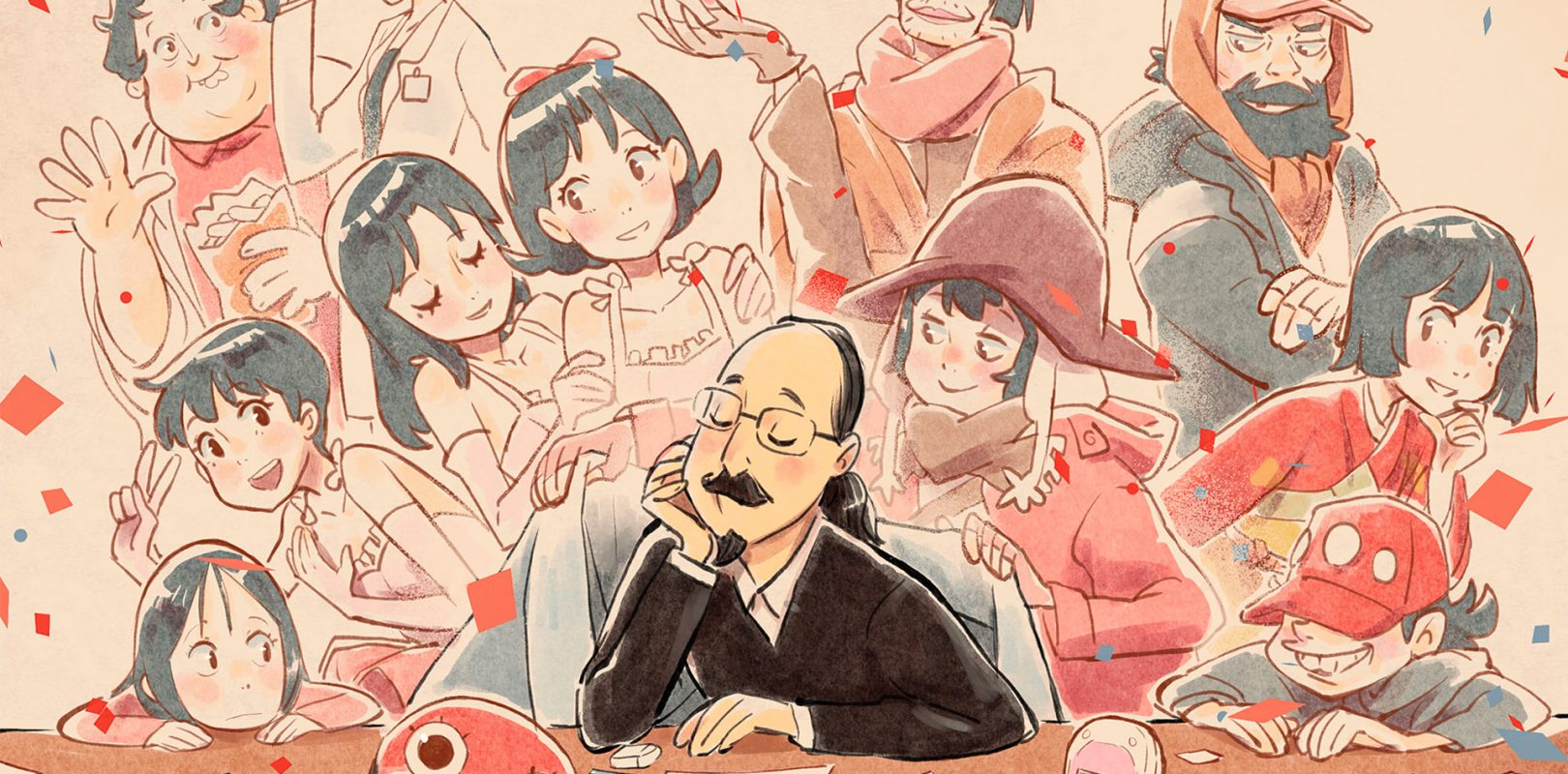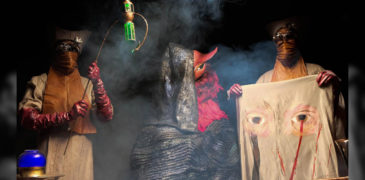
I had the great fortune of viewing the documentary Satoshi Kon: The Illusionist (2021) at this years’ Nightstream horror film festival. As a longtime fan of his work it turned out to be an emotional journey that affirmed of my love of animation and felt like a visit with some of my favorite creators. The surprising aspect of the film is that the bulk of it is a deep-dive of his movies, teasing out details and correlations with the help of masters and scholars alike, giving so much food for thought to die hard fans as well as folks new to the scene.
For those unfamiliar with Satoshi Kon, he was a Japanese mangaka and animator who accomplished four films and one limited series in his lifetime: Perfect Blue (1997), Millennium Actress (2001), Tokyo Godfathers (2003), and Paprika (2006), and the series Paranoia Agent (2004). However, don’t let the quantity fool you as these films stand like monoliths within the anime genre, exploring both the boundaries of anime as well as storytelling itself. Known for his ability to blur the line between reality and dream, his films are based in adult themes and intended for adult consumption. While often shocking, they are also tender, blending the surreal with the very real emotions of everyday life.

Produced by French studio Carlotta Films, and written and directed by Pascal Alex-Vincent, Satoshi Kon: The Illusionist avoids details about Kon’s personal life, and instead focuses on his career and analyzing the brilliance of his creations with help from some of his most prominent and long-time collaborators. Alex-Vincent also brings in French animation scholars and historians to give luscious background to the topics at hand. Considering France’s long history and love affair with animation, and not just as something for children, it is no wonder that Kon found such admirers among Alex-Vincent and his peers.
As the documentary shows though, the French aren’t the only ones to have been inspired by Kon. His influence reached (and continues to reach) far beyond anime and into the world of cinema at large, and though many of his films did not achieve commercial success, the films like Black Swan that they influenced certainly did. Darren Aronofsky is one of the foremost figures in the movie, and probably the best person for the job of explaining Kon’s significance to Western and American audiences. However, the Western contributor that had me jumping out of my seat was Rodney Rothman, writer and director of the epic Spider-Man: Into the Spider-Verse (2018).

I could argue all day, and possibly into next week, that Spider-Man: Into the Spider-Verse is the best animation to come out of the United States in well over a decade. I was lucky enough to see Rothman speak at New York Comic Con in 2018 where they also let us preview the first 30 minutes of the film months before release. I adore the film (enough to fight you) but never equated it to Satoshi Kon’s work until Rothman broke down Kon’s ability to a viewers interpretation of what is and isn’t:
“Paprika just created its own feel. It was transporting. It was unnerving. It wasn’t just a movie about bending reality, it was a movie that captured what it feels like to have your reality bended. From that I really learned one of the main lessons that I […] thought a lot about during the making of Into the Spider-Verse which is that animation doesn’t have to look real, it just has to feel real.” -Rodney Rothman, Satoshi Kon: The Illusionist
My first experience with Kon was a VHS of Perfect Blue borrowed from the video store I worked at in high school. I loved A-1 Video because they actually had a great selection of anime, as well as foreign films like Cinema Paradiso (1988). I spent many nights alone in my room watching titles like Ghost in a Shell (1996 US release), Psycho Diver (1997), and Demon City (1987) on a little tv with a VHS player built in. Nothing I had ever seen evoked quite the same bizarre introspection and unworldly feelings, and the animation made each film different from the last.
Perfect Blue stands out in my memory because it is so intense, but grounded in the real world in a way the others weren’t. It is a psychological thriller at it’s core, and though there are dreamlike elements to it, it is not as fantastical as all the other anime I was consuming at the time. Yet, as Rothman touches on, it still transcends reality and oozes surreal visuals that unsettle the viewers sense of reality. Therein lies perhaps the true brilliance of Kon, as his peers work hard to explain in the documentary; his ability to turn our concept of reality on its head and allow it to descend into a chaotic and profound dream, executed with lucidity.

The music for Paprika still has the power to transport me to the overwhelming feelings of my first theatrical viewing: awe, delight, and the most pleasant of discomforts. My early love of anime in the days of Perfect Blue was something I shared with cinephiles, folks who were likely to have Akira (1988) sitting on their shelf next to Run Lola Run (1998) and Taxi Driver (1976), and long before the days of “otaku” and the idea that one would be a fan of everything Japan creates. I am forever chasing media that challenges my flimsy grasp on “the real world” and the discomfort films like Perfect Blue present, and sometimes worry that it is a high I will always be chasing and never again achieve.
It breaks my heart that a man that gave so much to the world of anime and cinema died so young, but there is still hope that his last vision, The Dreaming Machine, will some day grace the world as other animators complete the work. The documentary also does a wonderful job of touching on Kon’s hard work to support other animators by fighting for their rights as well as fostering a new generation of creators. It would be impossible to measure Satoshi Kon’s impact, but we will likely (and hopefully) see it continue in future generations of animators.
We Watched Satoshi Kon: The Illusionist as part of Nighstream

More Film Festival Coverage
A Wounded Fawn opens with a quote from Surrealist painter and author Leonora Carrington: “I suddenly became aware that I was both mortal and touchable and that I could be… Rob Schroeder delivers one incredible directorial debut with this aesthetically lush and deliciously convoluted mystery box film. After his car breaks down during a storm, our protagonist Glen (Vincent Kartheiser)… When I saw the poster for Agnes, I was really hoping it was going to be a Nunspolitation film, because man, those need to make a comeback. Spoiler, it isn’t… Farley Wilder is the local peeping tom in a small New Hampshire town, where his reputation has earned him the interest of a writer, Scarlett, and together the two begin… In our modern times, with seemingly endless movie selections available at the touch of a button and in high definition quality, it seems crazy that anyone would anyone choose to… My attraction to horror movies goes deeper than enjoying the dopamine rush that comes from a well-made, scary film. Horror movies can broaden our horizons by introducing audiences to new…A Wounded Fawn (2022) Film Review – The Faun and the Muse
Ultrasound (2021) Film Review – A Meticulously Composed Surreal Nightmare
Agnes (2021) Film Review – A Journey of Faith
Freaky Farley (2007) Film Review – The Perverted Hero We All Need
Cult of VHS (2022) Documentary Review: Love and Obsolete Media
T Blockers (2023) Film Review – Do You Come From A Land Down Under? [FrightFest]

A study in contrasts, Aubry is a lover of knitting and rescuing strays, but also most likely the one cheering loudest during gory horror scenes.
Someday she’s going to get too excited and accidentally stab herself with a knitting needle.





![T Blockers (2023) Film Review – Do You Come From A Land Down Under? [FrightFest]](https://www.grimoireofhorror.com/wp-content/uploads/2023/08/T-BLOCKERS-Cover-365x180.jpg)